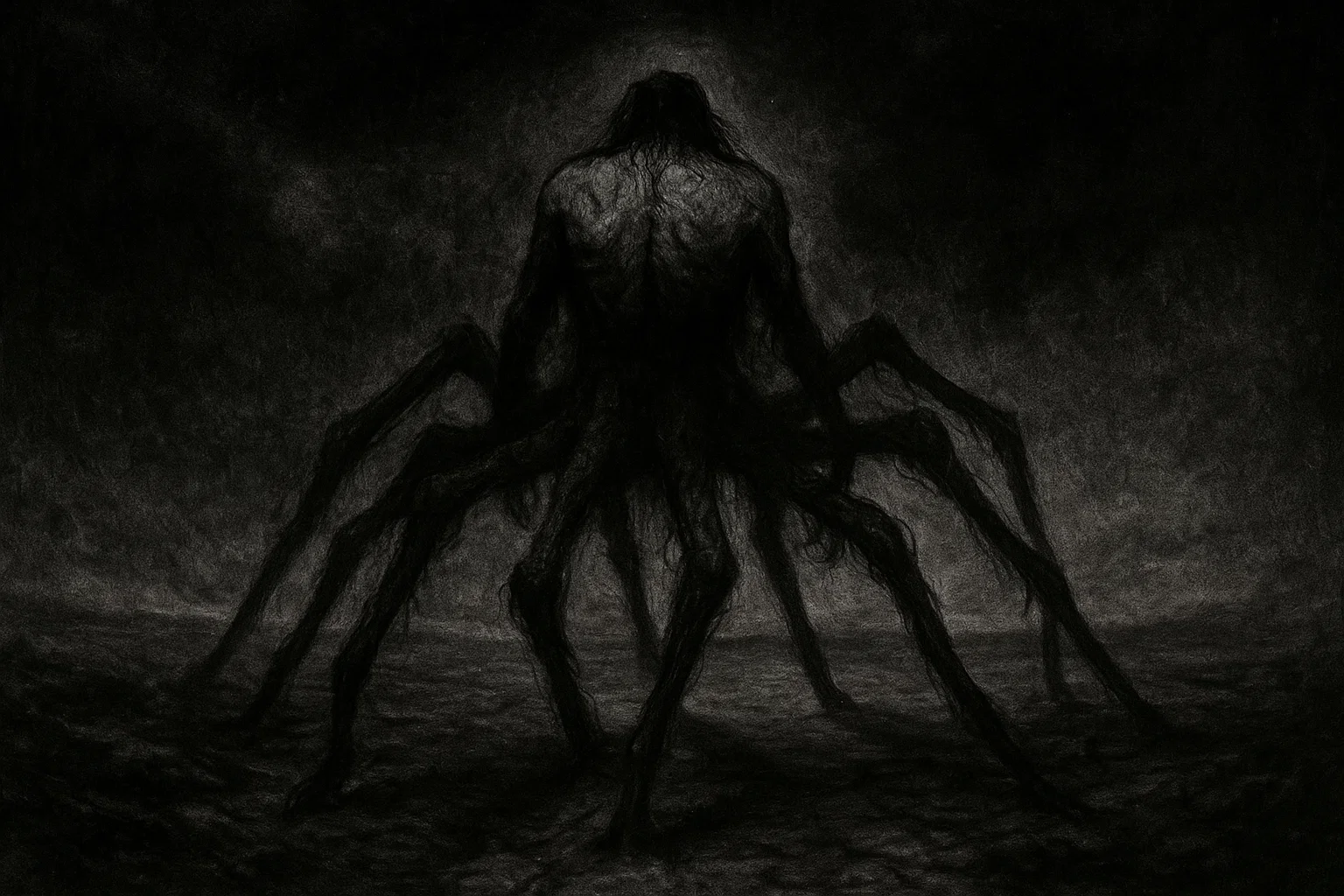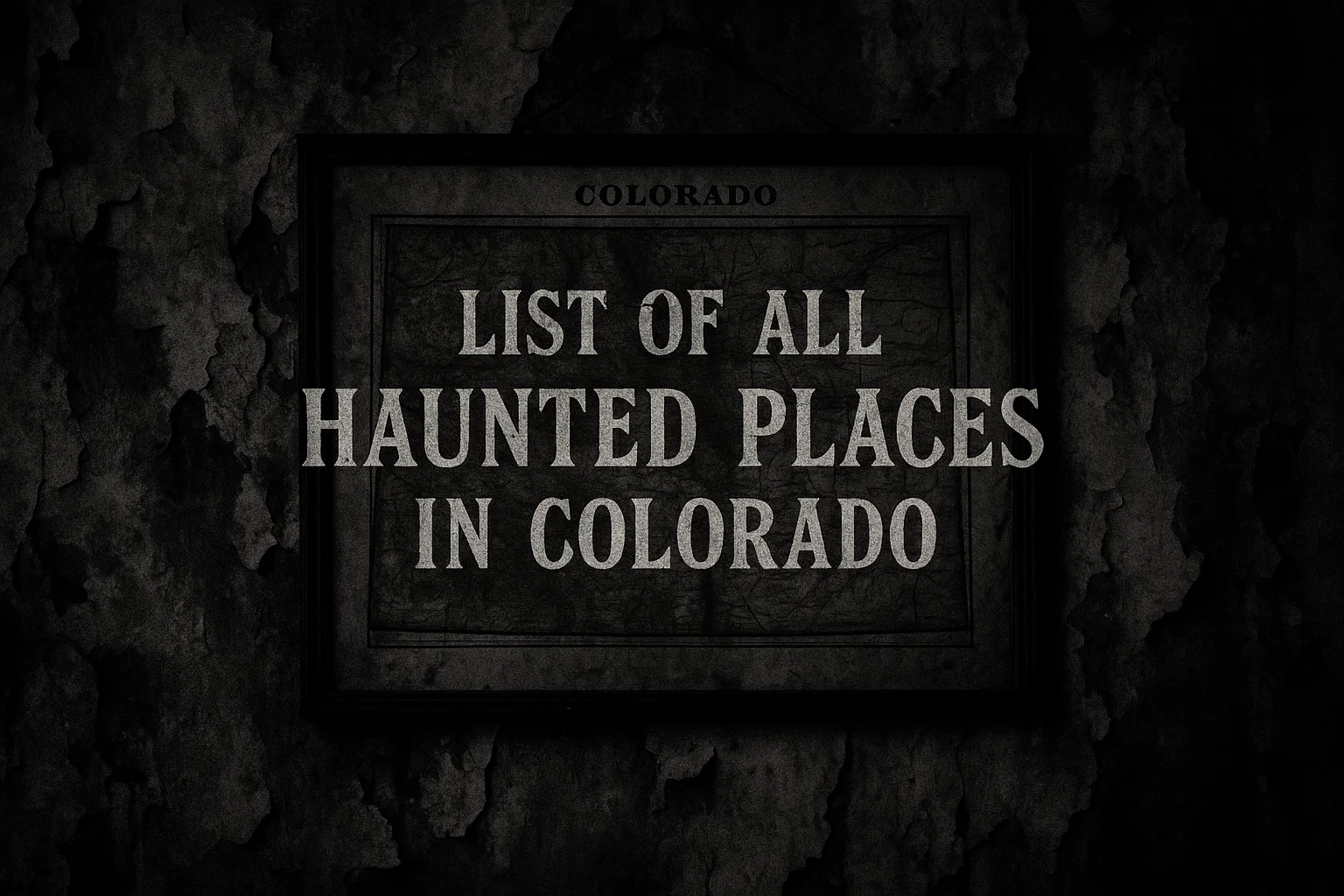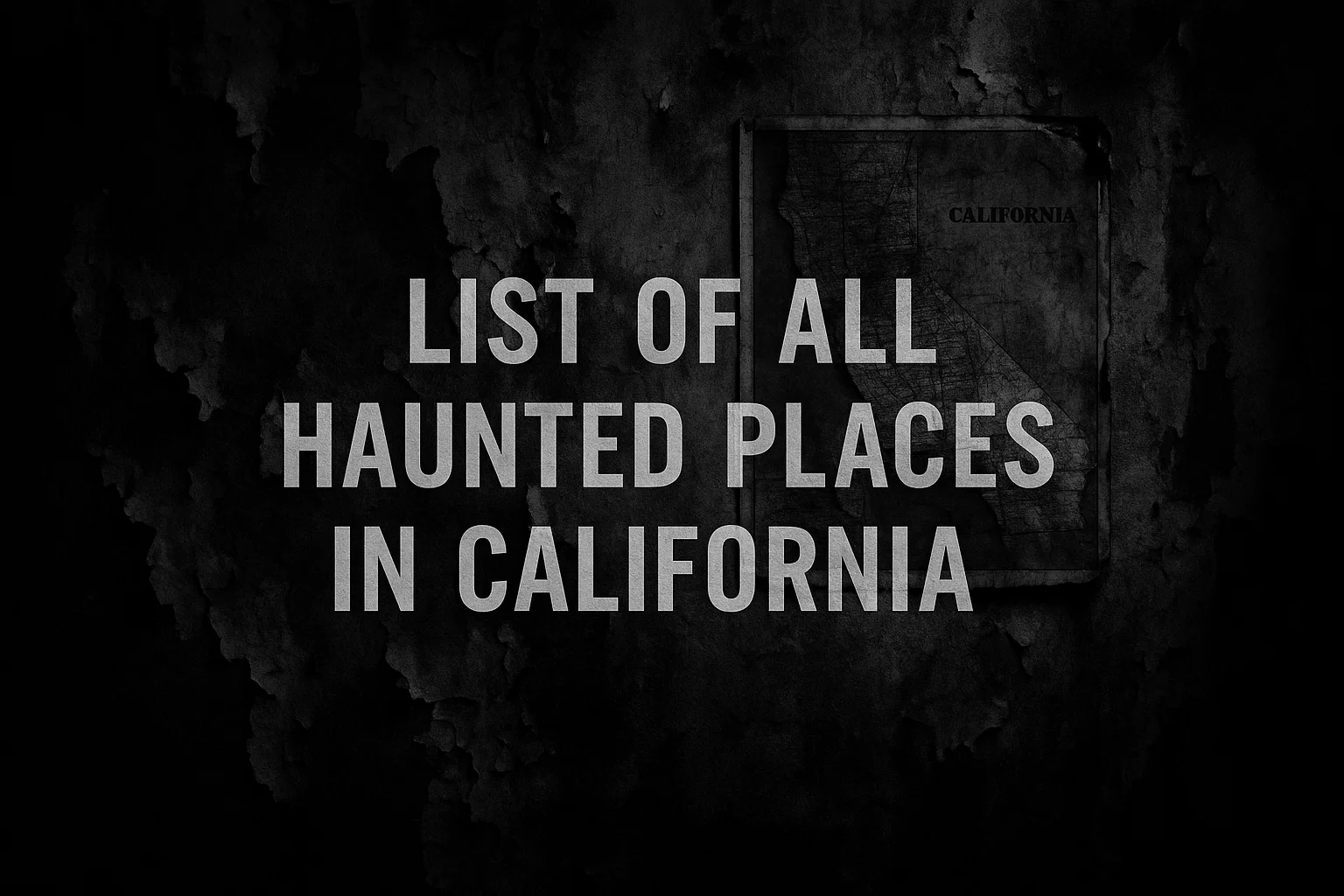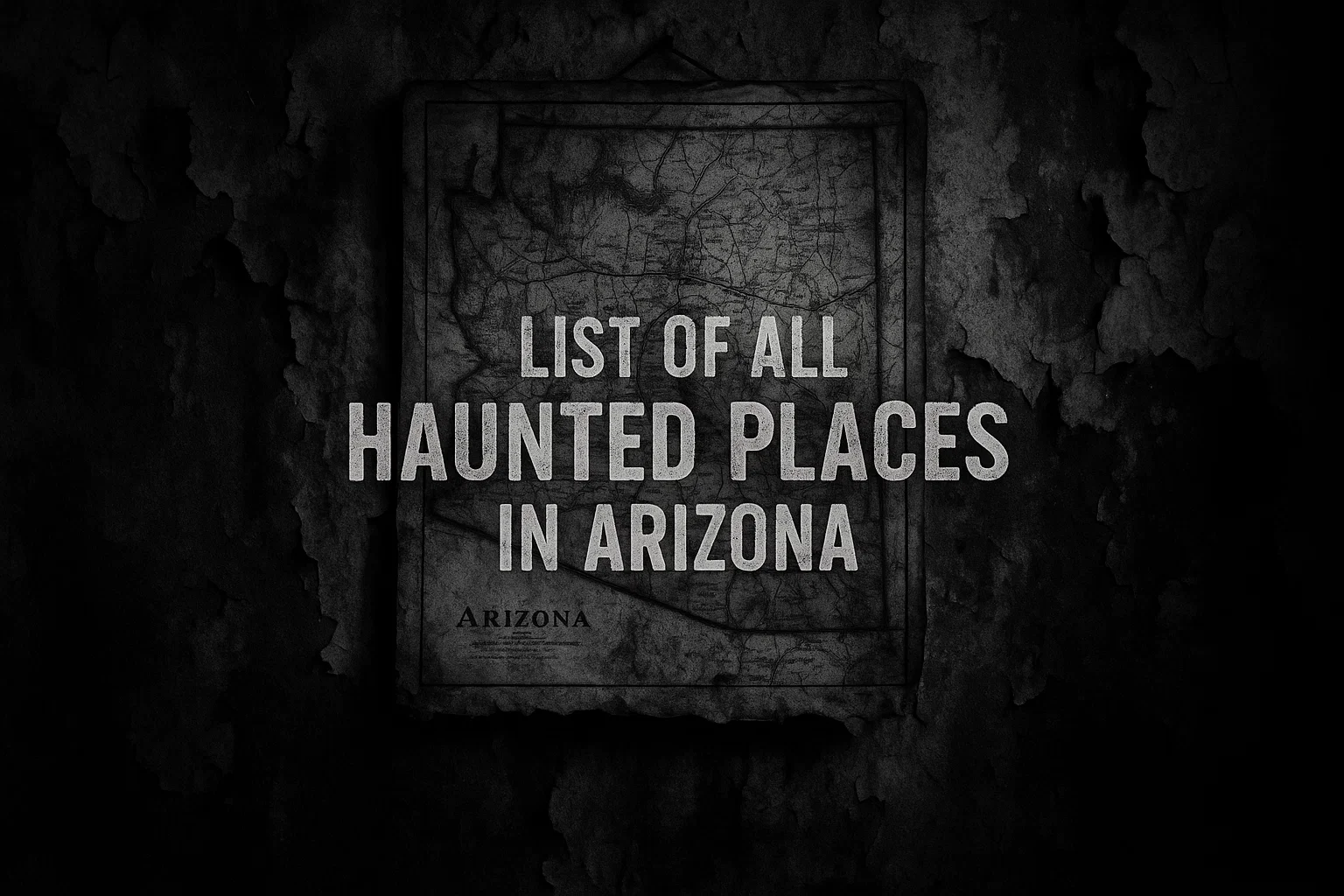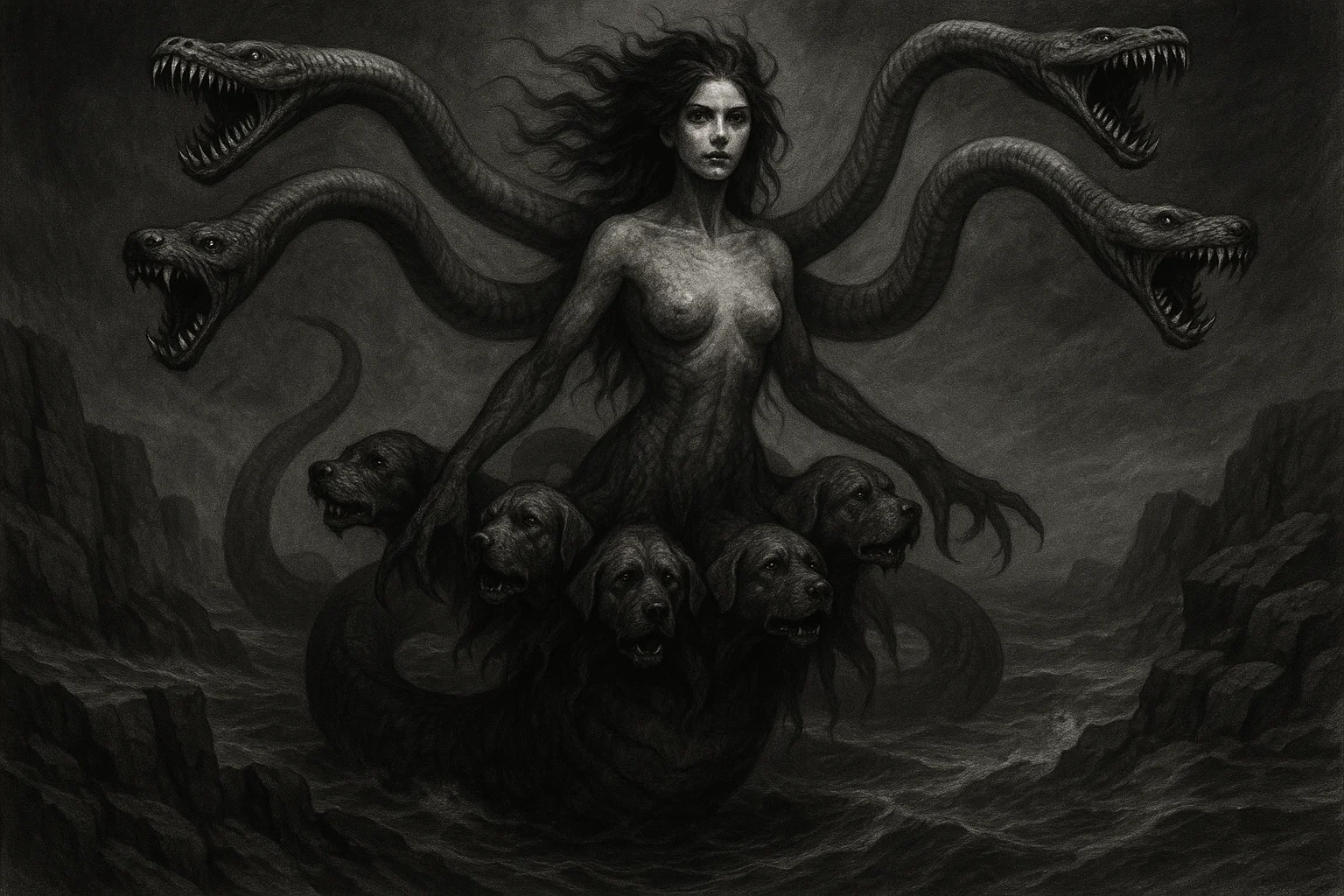In the dark corners of demonology, where ancient grimoires whisper secrets of the infernal realms, Buer emerges as a cunning Great President of Hell, luring mortals with promises of knowledge and restoration.
This enigmatic demon, documented in 16th-century texts like the Pseudomonarchia Daemonum, commands legions of lesser spirits, twisting philosophy, herbal lore, and physical mending into tools of corruption and eternal damnation.
Why does Buer appear in the form of a grotesque wheel or centaur, and what hidden perils lurk behind his offers of aid? How has this entity influenced occult practices across centuries, from Renaissance Europe to modern interpretations in folklore and media?
This exploration uncovers the layers of Buer‘s mythology, delving into his origins, deceptive powers, and place within the hierarchy of Hell. From his etymological roots in ancient languages to his astrological ties with Sagittarius, we examine how Buer tempts humanity, leading souls astray under the guise of enlightenment. What ancient deities might share shadowy connections with this demon, and how do his abilities manifest in legends of temptation and ruin?
Summary
Key Information
| Attribute | Details |
|---|---|
| Name | Buer, Buar, Buere, Boer |
| Title | Great President of Hell, President of the Infernal Realms |
| Gender | Male |
| Role | Tempter through false healing, twisted teacher of philosophy and herbs |
| Hierarchy | Second Order Demon, Great President, commands 50 legions (variations include 15 or 26) |
| Servitors | 50 legions of lesser demons, including unnamed spirits of deception and ailment |
| Superior Demon | Possibly Baal or Paimon, higher kings in the infernal hierarchy |
| Powers | Deceptive healing of ailments, teaching corrupted moral and natural philosophy, logic, herbal virtues leading to dependency, granting treacherous familiars |
| Appearance | Lion-headed with five or more goat/horse legs forming a wheel, or centaur-like in Sagittarius form |
| Etymology | Derived from Hebrew “בואר” (Buar) meaning “to burn” or “light”; linked to fiery destruction or false illumination |
| Associated Figures | Chiron (twisted parallel in Greek mythology), Ixion (fiery wheel punishment), Haniel (opposing angel) |
| Weaknesses | Aversion to sobriety violations, countered by holy invocations and purity rituals |
| Opposing Angel/Saint | Haniel (Kabbalistic), Saint Raphael (archangel of true healing) |
| Equipment/Tools | Sigil for summoning, mercury for alchemical deceptions, aloe for false remedies |
| Pantheon | Christian Demonology, Goetic Tradition, influences from Mesopotamian and Greek myths |
Etymology
The name Buer traces its roots to the Hebrew word “בואר” (Buar), which translates to “to burn” or “light,” evoking images of destructive flames or misleading enlightenment that consumes the soul. This etymological foundation aligns with Buer‘s role in demonology, where his “light” of knowledge often leads to spiritual incineration, burning away mortal virtues and replacing them with infernal dependencies.
Scholars in occult studies suggest this Hebrew origin reflects ancient Semitic influences, where words related to fire symbolized both creation and devastation, mirroring Buer‘s dual facade of aid and ruin.
Further linguistic analysis reveals potential connections to Aramaic and Akkadian terms for “well” or “pit,” implying a bottomless abyss of temptation, akin to the pits of Hell.
In Renaissance grimoires, Buer‘s name appears with variations like Buere or Boer, possibly corrupted through Latin translations, emphasizing his deceptive nature. Some etymologists link it to Indo-European roots for “boiling” or “seething,” symbolizing the bubbling chaos Buer inflicts on the human psyche through false philosophies.
In broader mythological contexts, Buer‘s name may echo ancient fire deities twisted into demonic forms, such as Mesopotamian spirits associated with scorching winds or purifying yet destructive flames. This evolution from potential neutral or positive connotations to outright malevolence underscores the Christian demonization of pagan elements during the Middle Ages. The pronunciation, often “Byoo-er” or “Boo-air,” carries phonetic weight in summoning rituals, where mispronunciation could invite unintended infernal wrath.
Alternative theories propose ties to Germanic words for “farmer” or “cultivator,” ironically twisted to represent Buer‘s “cultivation” of herbal knowledge for poisonous ends. In Kabbalistic interpretations, the name’s gematria value connects to numbers symbolizing imbalance and downfall.
These multifaceted etymological layers highlight Buer as a linguistic embodiment of deception, where even his name promises illumination but delivers only shadows and ashes.
You May Also Like: Botis in Demonology: From Serpent to Hell’s Noble
What Does the Demon Buer Look Like?
Buer manifests in a grotesque and unsettling form, designed to instill both awe and terror in those who summon him.
His primary appearance features a fierce lion’s head, symbolizing predatory strength and dominance, atop a body with five or more goat or horse legs radiating outward like spokes on a wheel, enabling erratic, omnidirectional movement that defies natural laws. This wheel-like structure, often depicted in 19th-century illustrations, evokes mechanical horror, as if Buer rolls through dimensions, crushing obstacles in his path.
In alternative manifestations, Buer assumes a centaur-like shape, reminiscent of the zodiac Sagittarius, with a human upper body transitioning into equine lower parts, armed with a bow and arrows for symbolic archery of fate-altering temptations.
Some accounts describe additional monstrous traits, such as multiple faces or blood-drinking features in nocturnal visions, heightening his nightmarish presence. His form’s adaptability underscores his cunning, shifting to exploit summoners’ fears or desires.
Historical and Mythological Background
Buer‘s origins lie in the shadowy fusion of ancient mythologies and medieval demonology, emerging as a corrupted echo of wiser figures twisted into infernal service. Likely born from the syncretism of Greek, Mesopotamian, and Hebrew traditions during the Renaissance, Buer appears first in Johann Weyer’s 1577 Pseudomonarchia Daemonum, cataloging him among fallen angels who rebelled with Lucifer.
His centaur-like form draws parallels to Chiron, the Greek centaur known for healing and wisdom, but Buer perverts these traits into tools of damnation, luring mortals into pacts that seal their souls.
Connections to ancient deities abound, with potential links to Ixion from Greek mythology, bound to a fiery wheel for eternal punishment, symbolizing Buer‘s rolling form as a harbinger of torment.
In Mesopotamian lore, spirits like the edimmu or gallu—hideous demons causing disease—mirror Buer‘s ailment-manipulating powers, suggesting an evolution from Near Eastern wind demons to a structured infernal president. Egyptian influences may tie him to lion-headed gods like Maahes, warped into a demonic predator through Christian lenses.
Further afield, Buer shares traits with Hindu yakshas or nature spirits, who guard treasures but demand heavy tolls, or Chinese mo demons from Buddhist imports, embodying chaos and illusion.
In Norse mythology, echoes of fire giants like Surtr, who burn the world, align with Buer‘s etymological fire roots. These global connections illustrate how Buer absorbed diverse pagan elements, rebranded as a malevolent entity in European grimoires.
The Temptation of the Afflicted
Legends tell of Buer preying on the desperate, appearing to healers or the ill with promises of miraculous cures. In one Renaissance tale, a plague-stricken alchemist summoned Buer for herbal secrets, only to find his remedies poisoned minds, driving patients to madness and suicide.
Buer‘s interaction with the summoner involved deceptive familiars that whispered further temptations, leading to the alchemist’s downfall in a web of infernal debts.
The Corruption of Scholars
Buer often targets intellectuals, offering twisted philosophical insights that erode faith and morality. A myth from 17th-century Europe describes a philosopher invoking Buer for logical mastery, receiving knowledge that justified heinous acts, ultimately corrupting his students into a cult of debauchery. Interactions with figures like Lucifer positioned Buer as a subordinate, relaying corrupted wisdom from higher demons.
You May Also Like: Balberith: The Infernal Scribe Who Tempts Humanity
The Wheel of Eternal Torment
Drawing from Ixion’s legend, Buer is said to bind souls to a metaphysical wheel, rolling them through cycles of false hope and despair. In this narrative, a king sought Buer‘s aid against enemies, gaining strategic “wisdom” that won battles but lost his kingdom to internal rot, his soul eternally spun in Buer‘s grasp.
The Alchemical Deception
In occult alchemical lore, Buer poses as a guide to transmutation, promising to turn base metals to gold or heal spiritual wounds.
A story involves an adept who, under Buer‘s tutelage, achieved apparent enlightenment, only to realize it was illusion, his body decaying as his soul burned in infernal fires. Interactions with demons like Astaroth amplified these deceptions.
Modern Echoes in Pop Culture
In contemporary myths, Buer appears in video games and anime, such as Welcome to Demon School! Iruma-kun, where he’s reimagined as a deceptive educator, or in Genshin Impact as Nahida’s demon name, symbolizing hidden dangers in knowledge quests.
These adaptations highlight Buer‘s enduring allure, tempting new generations through media.
Historical Mentions
| Text/Grimoire | Year | Description | Excerpt |
|---|---|---|---|
| Pseudomonarchia Daemonum | 1577 | Great President commanding 50 legions, teaches corrupted philosophy and herbs, heals with hidden costs | “Buer, a great president, and is seene in this signe [*]; he absolutelie teacheth philosophie morall and naturall, and also logicke, and the vertue of herbes: he giveth the best familiars, he can heale all diseases, speciallie of men, and reigneth over fiftie legions.” |
| Lesser Key of Solomon (Ars Goetia) | 1904 | 10th spirit, Sagittarius form, deceptive teacher and healer | “The Tenth Spirit is Buer, a Great President. He appeareth in Sagittary, and that is his shape when the Sun is there. He teaches Philosophy, both Moral and Natural, and the Logic Art, and also the Virtues of all Herbs and Plants. He healeth all distempers in man, and giveth good Familiars. He governeth 50 Legions of Spirits…” |
| Dictionnaire Infernal | 1818 | Lion-headed wheel, teaches logic and herbs with malevolent intent | “Buer, démon de seconde classe, président aux enfers; il a la forme d’une étoile ou d’une roue à cinq branches, et s’avance en roulant sur lui-même. Il enseigne la philosophie, la logique et les vertus des herbes médicinales.” |
| De Praestigiis Daemonum | 1563 | Commands 15 legions, associated with ethics and herbal deception | – |
Buer’s Powers and Abilities
Buer, as a master deceiver in demonology, wields powers centered on false healing and corrupted knowledge, distinguishing him from lesser demons who rely on brute force or overt destruction. His abilities tempt mortals into dependency, promising relief from ailments while ensnaring souls in eternal bondage.
Buer heals physical distempers—diseases, infections, and chronic pains—but these cures often come with spiritual side effects, fostering addictions or moral decay that lead to damnation.
In herbal lore, Buer reveals the “virtues” of plants, enabling potions that cure but corrupt, turning healers into unwitting poisoners. His teachings in moral philosophy twist ethics into justifications for sin, while natural philosophy perverts science into occult heresies. Logic under Buer becomes a tool for manipulation, eroding truth. He grants familiars—deceptive spirits that aid but betray, binding users to infernal pacts.
In pop culture adaptations, such as anime and games, Buer gains newer powers like emotional manipulation or fate-altering illusions, reflecting modern interpretations where he exploits psychological vulnerabilities. For instance, in digital realms, he might “heal” virtual ailments, symbolizing real-world temptations through technology.
Buer corrupts by appealing to desperation: a sick individual receives healing but develops hubris, leading to isolation from faith. Scholars gain wisdom but use it for selfish ends, damning communities. His powers, unlike general demonic possession, are insidious, masquerading as gifts.
You May Also Like: Who Was Apep, the Ancient Demon of Darkness?
Powers and Abilities Breakdown
| Power/Ability | Description | Source | How It Tempts/Corrupts Humans | Countermeasure |
|---|---|---|---|---|
| False Physical Healing | Cures diseases and injuries with hidden spiritual costs | Pseudomonarchia Daemonum | Offers quick fixes, fostering rejection of divine healing | Invocation of Saint Raphael, medical ethics |
| Emotional Deception | Alleviates mental traumas, instilling false peace | Modern occult interpretations | Builds dependency, leading to soul-binding pacts | Therapy grounded in faith, angelic protection |
| Corrupted Philosophical Teaching | Imparts twisted moral and natural philosophy | Lesser Key of Solomon | Justifies sins, eroding ethical foundations | Study of holy scriptures, humility rituals |
| Herbal Manipulation | Reveals plant virtues for potions that heal but poison the soul | Dictionnaire Infernal | Encourages occult dependency over natural remedies | Blessed herbs, exorcistic countermeasures |
| Granting Treacherous Familiars | Provides spirits that aid but ultimately betray | Ars Goetia | Binds users to infernal loyalties, risking possession | Protective circles, banishing incantations |
| Logical Perversion | Teaches logic twisted for deception and manipulation | Historical grimoires | Turns reasoning into tools for fraud and heresy | Logical debates with virtuous mentors |
| Alchemical Illusions | Guides false transmutations in modern myths | Pop culture (e.g., anime) | Promises wealth or power, leading to ruin | Alchemical purity rites, opposing angels |
How to Counter Buer’s Powers
Countering Buer demands vigilance, faith, and ritualistic precision, as his deceptions exploit human weaknesses.
His aversion to sobriety and purity means summoners must avoid intoxicants, but for protection, one invokes opposing forces like the angel Haniel, whose true enlightenment dispels Buer‘s false light. Holy water, blessed amulets, and prayers to Saint Raphael disrupt his healing facades, revealing underlying corruptions.
Spiritual countermeasures include fasting and confession, stripping away vulnerabilities Buer targets. In exorcisms, reciting Psalms or using consecrated herbs counters his plant-based temptations. Protective sigils from angelic grimoires create barriers, while communal prayer amplifies resistance against his legions.
For those tempted by knowledge, grounding in orthodox philosophy prevents logical perversions. Modern adaptations suggest psychological tools like mindfulness, but rooted in faith to avoid further traps. Ultimately, rejecting Buer‘s pacts through willpower and divine intervention severs his influence, turning his wheel of torment against him.
Buer’s Role in the Hierarchy of Hell
Within the hierarchy of Hell, Buer serves as a Great President, a mid-tier commander overseeing administrative deceptions and intellectual corruptions, below kings like Baal or Lucifer but above earls and knights. According to grimoires like the Ars Goetia, he rules a domain in Hell’s second circle, perhaps a labyrinthine academy of twisted learning, where souls endure eternal false enlightenments.
Commanding 50 legions—vast armies of deceptive spirits—Buer deploys them to tempt scholars and healers worldwide. Notable subordinates include unnamed familiars specialized in herbal poisons or philosophical heresies. Superiors like Paimon or Amon direct his operations, using Buer for subtle infiltrations where overt demons fail.
Allies include Marbas, sharing healing deceptions, or Astaroth, amplifying knowledge temptations. Adversaries might be Botis, competing for reconciliation roles, or higher kings viewing Buer‘s independence as threat. His relationships foster infernal politics, where alliances shift like his wheel form, always advancing Hell’s agenda of mortal corruption.
You May Also Like: Anamelech: The Forgotten Lunar Demon of Ill Omens
Astrological Associations and Symbolism
Buer aligns strongly with Sagittarius, manifesting when the Sun enters this fire sign (November 22–December 21), symbolizing his arrow-like temptations piercing human resolve. His primary element is Earth, grounding deceptions in material realms, but influences from Fire evoke burning illuminations. Planetary ties to Mercury enhance communicative manipulations, while Venus twists harmony into discord.
Colors like light blue represent false serenity, turquoise for deceptive protection. Metals include mercury for fluid adaptability, crystals like turquoise or aloe-infused stones for healing facades. Numbers such as 6 symbolize imbalance, plants like aloe for corrupted remedies.
Astrological and Symbolic Associations
| Aspect | Details |
|---|---|
| Zodiac | Sagittarius (November 22–December 21) |
| Element | Earth (primary), Fire (secondary) |
| Planet | Mercury (communication), Venus (false harmony) |
| Direction | East (new deceptions) |
| Metal | Mercury, Copper |
| Color | Light Blue, Turquoise |
| Plant | Aloe, Sage (twisted virtues) |
| Number | 6, 50 (legions) |
| Precious Stone | Turquoise, Lapis Lazuli (false wisdom) |
Symbolism includes the lion for predatory intellect, wheel for cyclical traps. These associations aid in rituals but warn of dangers.
Buer’s Sigil
Buer‘s sigil, a intricate geometric emblem from grimoires, acts as a gateway for his presence, drawn in rituals to focus infernal energies. Its lines symbolize interconnected deceptions, requiring precise replication to avoid backlash.
Associated Symbols and Offerings
| Symbol/Item | Association/Meaning | Use in Rituals |
|---|---|---|
| Lion | Predatory strength, dominance | Invoke for power, risk corruption |
| Aloe | False healing, purification | Offering to lure, but invites dependency |
| Light Blue Candle | Illusory harmony, clarity | Lights sigil, masks true intentions |
| Mercury | Adaptability, communication | Enhances deceptions in summonings |
| Turquoise | Deceptive protection, wisdom | Amulet that binds rather than shields |
| Incense (Sandalwood) | Spiritual illusion, connection | Creates atmosphere for temptations |
| Bow and Arrow | Fate-altering precision | Symbolic in Sagittarius invocations |
Rituals demand caution, as offerings strengthen Buer‘s hold.
Comparison with Other Demons
| Demon | Rank/Powers | Appearance/Associations | Key Difference from Buer |
|---|---|---|---|
| Astaroth | Duke; teaches sciences, reveals secrets | Winged figure on dragon | Broader secrets, no healing focus |
| Paimon | King; grants arts, obedience | Man on camel with trumpets | Higher command, musical temptations |
| Mammon | President; wealth, greed | Cloaked humanoid | Material riches over intellectual corruption |
| Botis | President/Earl; reconciles, foretells | Viper to horned human | Focus on futures, less on philosophy |
| Zepar | Duke; love, infertility | Armored soldier | Romantic deceptions, not herbal or logical |
| Bifrons | Earl; sciences, necromancy | Monster to human | Corpse manipulation, no healing |
| Bune | Duke; wealth, eloquence | Three-headed dragon | Speech and riches, lacks plant virtues |
| Camio | President; animal understanding, futures | Bird to armed human | Fauna communication, not human ailments |
| Marbas | President; healing, transformations | Lion to human | Shape-shifting emphasis, similar healing but broader |
| Valac | President; treasures, serpents | Boy on dragon | Serpent guardianship, treasure focus |
You May Also Like: Who Was the Beast of Gévaudan? Truth or Myth
Conclusion
Buer embodies the insidious nature of infernal temptation, a Great President whose false promises of healing and wisdom mask paths to ruin and damnation. Through centuries of demonology, from ancient grimoires to modern media, he persists as a warning against seeking shortcuts in knowledge or health, reminding us that demonic aid always exacts a soul’s price.
As we reflect on Buer‘s lore, his wheel-like form symbolizes the endless cycle of deception, urging vigilance against such entities. His legacy in occult traditions underscores the eternal struggle between light and shadow, where true power lies in resisting the allure of the abyss.

